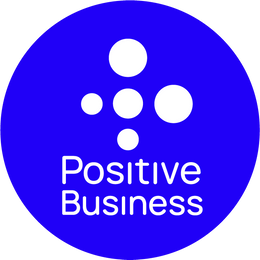News
Diversity in the workplace benefits everybody and goes a long way to improving the culture of a business. Although this is true across the board, it’s especially beneficial when it comes to more senior management positions.
Recruiting women into leadership roles is not only important for offering equal opportunities, but also ensures a diverse approach to how a company is managed. When too many people of similar backgrounds lead an organisation, it can be hard for the team to have the broad perspective needed to succeed.
Research shows that businesses with a clear commitment to diversity and inclusion are 35% more likely to be successful. Data also shows that organisations with at least one female board member have a higher net income growth than those led entirely by men.
Gender equality in the workplace is becoming an increasingly popular topic and there’s much to be gained by adopting fairer practices at your organisation. That’s why we’re sharing meaningful ways for businesses to adapt their current processes and recruit more women into leadership positions.
Equal Employment Opportunity
Having an Equal Employment Opportunities (EEO) policy in place is a great way to demonstrate that you offer an inclusive and supportive working environment.
Your EEO policy should describe what you’re doing to create a fairer workplace and explain how you combat discrimination. An EEO policy doesn’t just tackle gender inequality, it also protects people from discrimination on the grounds of age, race, disability, sexual orientation, etc. What’s more, it’ll empower the women and minority groups already in your company and help everyone to feel valued.
As you can see, a clear commitment to equal opportunities will help you to recruit more women into leadership roles. Ensure your business is an inclusive place to work so you can attract top talent from all kinds of different backgrounds and make sure that people know it!
Practice What You Preach
It’s great to start conversations around gender equality in the workplace, but if this doesn’t translate into action within your organisation then the value is lost.
Launching internal initiatives, such as employee inclusion programs, leadership development opportunities, unconscious bias training and offering mentorship, allows you to create an environment where everyone can thrive.
Providing realistic avenues for professional development will not only encourage women to apply for leadership opportunities at your organisation but will also increase the potential for the internal progression of existing female employees.
By being transparent about those professional development opportunities, you’ll be able to attract the candidates you need and show that you are a business that practices what they preach.
Assess Your Recruitment Process
When striving to recruit more women into leadership roles at your company, you should assess every stage of the candidate journey.
Before you share the job description with the world, make sure you’ve written it in a way that embraces inclusivity and accurately represents the culture at your organisation.
Use gender-neutral language throughout your job descriptions and ensure you don’t make anyone feel excluded. It’s wise to make a statement at the bottom of your job description to say you welcome applications from everyone, and that you don’t discriminate against protected characteristics, such as age, disability, race or religion.
Additionally, when you get to the stage of interviewing candidates, make sure to include women on the interview panel. You can also reiterate your commitment to diversity, inclusion and equal opportunities during each interview with a new candidate.
Track and Measure Your Recruiting Efforts
Only by tracking and measuring your recruitment processes will you be able to understand what’s working well. This will show you where changes need to be made in order to successfully recruit more women into management roles.
Assessing both your short-term and long-term recruitment results will highlight which changes have had a positive impact. It can be helpful to evaluate how many women applied for positions at your company and how this figure changed when job descriptions were made more inclusive.
An important part of this process is to collect feedback from existing employees. Ask them to reflect on the application, interview and onboarding stages, as well as their time at the company so that you can improve your hiring practices.
Use Social Media to Connect with Applicants
Social media provides ample opportunities to connect with women in your industry. By developing connections and building relationships with these people, you’ll generate interest in your organisation.
LinkedIn is a fantastic place to directly connect with women who are already working in leadership roles and doing so can expand and diversify your network. As you continue to do this, you’ll have an established pipeline of candidates to reach out to when the time comes to make a new hire.
Your social media platforms are also naturally a great place to share information about your EEO policy and inclusive culture. If you have a company blog, you can create insightful articles on relevant topics and share these blog posts with your social networks.
Building your reputation as an equal opportunities employer on social media has countless benefits. Most importantly, it enables all candidates to better understand who you are and helps you attract a diverse selection of job seekers.
Know the Law
Gender discrimination at work can not only impact existing employees but also harm the reputation of a company, which can deter other people from wanting to work there.
In New Zealand, it’s against the law for employers to discriminate against people in the workplace and this extends to hiring practices.
Both the Human Rights Act 1993 and the Employment Relations Act 2000 protect employees and job seekers against discrimination, harassment and victimisation. These laws are enforced by the Human Rights Commission and should be taken seriously by all employers.
Women in Leadership Roles
With diversity a concern for businesses across New Zealand, it’s a great time to start conversations in the workplace about how everyone can unite to create a more equal environment and adjust hiring policies to reflect it.
Big changes can start with seemingly small actions. There are likely some simple ways that you can embrace the ideas mentioned in this article today to begin empowering the women in your business.
If you want to work with a recruitment agency that believes in inclusion, diversity and empowerment, contact our team of specialists today.





